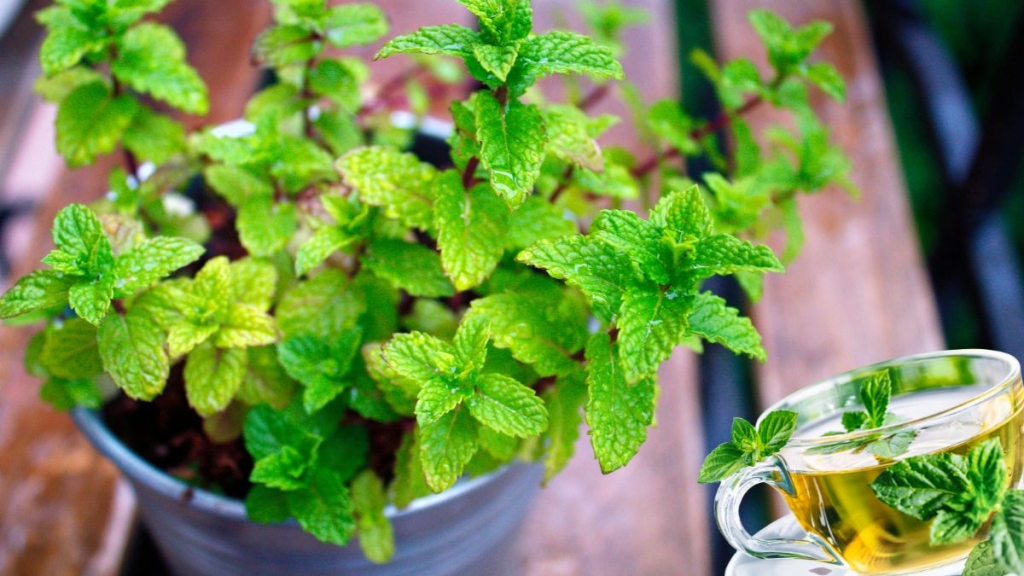Mint is considered by many to be a medicinal herb, which is why many people want to know how to grow mint at home. So here are the seven best tips for planting mint. Plants bring many benefits to our health and mint is no different. One of its best-known benefits is that it helps to reduce symptoms of stress and anxiety, as well as having a calming effect. So, to leave you in no doubt, here's how to plant mint at home and much more about its benefits. See how simple and easy it is and discover its health benefits.
How to plant mint at home?
When we talk about how to plant mint at home, we are talking about one of the simplest plants to plant, in addition to being very resistant, a simple branch of mint planted can spread quickly.

Here are tips on how to plant mint at home:
- Step one: Make sure the pot you choose to plant in has holes in the bottom. Add a layer of clay to the bottom of the pot to complete the drainage system.
- Step two: Then, with the substrate ready, fill the pot to the brim with homemade soil. Remember that the substrate must be made of organic matter. After this procedure, wet the soil with your spray bottle.
- Step three: After that, place the mint seedling in the middle of the soil, then cover all the space around the plant so that no roots are exposed. Don't plant the seedling too deep; approximately 5 cm is enough for your mini garden.
- Step four: Water the pot with your mint seedling twice a day, have a spray bottle to help you, the soil needs to always be moist.
- Step five: Mint is a plant that needs a lot of water, so water it regularly to ensure it grows at its best. Another good tip is to research how to make a self-watering pot so you don't forget to water your plant daily.
- Step six: Once your plant is grown, as mentioned above, mint is a plant that spreads quickly. So make sure that your plant does not take over the environment of other plants, but if there are no other plants in the area, let the mint grow naturally.
- Step seven: Another useful tip here is that you cut the tallest branches, as it is recommended that you let the mint grow laterally.
Health benefits of mint
Mint is one of the oldest culinary plants that enhances the flavor and aroma of dishes and offers a number of potential health benefits, such as:
- The leaves are rich in several minerals, including iron, potassium and manganese, which are crucial for the production of hemoglobin and improve brain function.
- Mint is a good source of vitamin A and folic acid. Vitamin A is essential for vision and eye health. Folate is crucial for neural development in children.
- The menthol compound in peppermint helps relieve various digestive problems, such as upset stomach, indigestion, stomach pain, bloating, and symptoms of irritable bowel syndrome. Menthol provides relaxing effects on the stomach muscles.
- Chewing fresh mint leaves or drinking mint tea can help cover up bad breath by reducing the bacteria that cause it.
- Consuming mint is beneficial for our health, but applying its paste to the skin is also advantageous. Applying mint gel or essential oil to the nipples after breastfeeding relieves cracked nipples and areolas and reduces post-breastfeeding pain.
- Menthol improves nasal breathing. Thus, inhaling the aroma of mint or peppermint oil relieves the symptoms of flu and colds.
Uses for Mint Leaves
There are many safe uses for your mint family herb garden beyond beautifying your gardens. Here is just a sampling:
- Food: Mints are especially good culinary ideas, ideal for chopping into salads, sprinkling on fruit or combining with basil or cilantro to make mint pesto.
- Drinks: Freeze a few trays of strong mint tea and use the ice cubes to chill your drinks.
- Tea: Why buy mint tea when it’s so easy to make? What we commonly call “mints” (peppermint, apple mint, etc.) are the traditional herbs for tea. Simply steep fresh mint leaves in boiling water for about five minutes and serve. It’s a great digestive aid after dinner.
- Rinse your hair: Add one part strong mint tea (especially rosemary) to one part cider vinegar for a conditioning rinse that you can leave in or rinse out. The vinegar smell dissipates after drying.
- Relieve sunburn pain: Make a strong peppermint tea and refrigerate the mixture for several hours. To use, gently apply it to the burned area with cotton pads.
How to plant mint in a plastic bottle?
Your mint can also be planted in plastic bottles, as shown in the video from Frutas e Vasos da Júlia, a YouTube channel with the best tips.
How to plant mint step by step in water?
Another way to plant mint at home is to put it in water, see the video on the Mãos à Horta YouTube channel.
Did you like this amazing tip? If so, share it with your friends and on your social networks. Leave your comment below and your suggestions. Receive it daily here on our website. Blog of ideas and tips free and follow us on Google News too. Thank you!